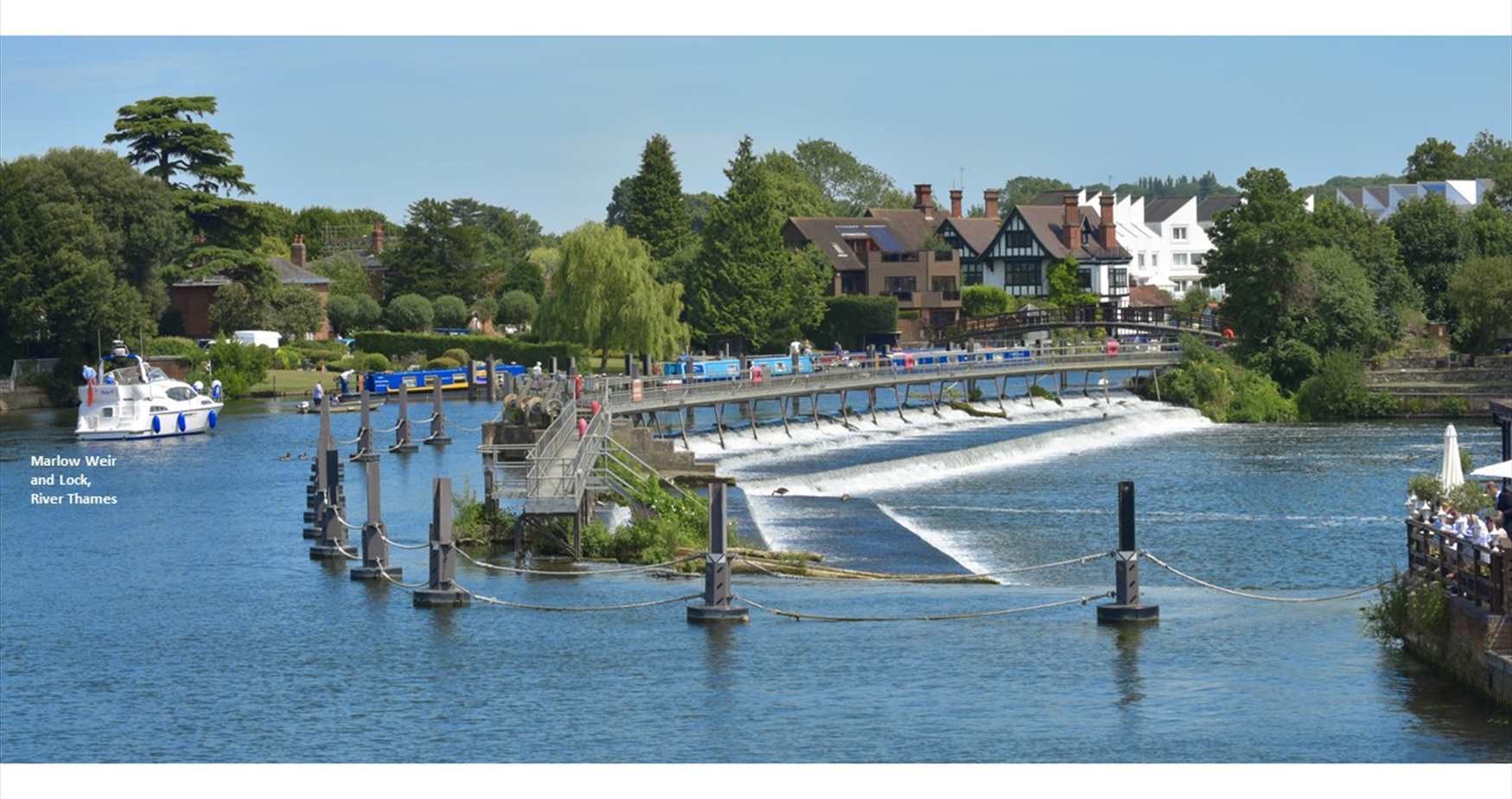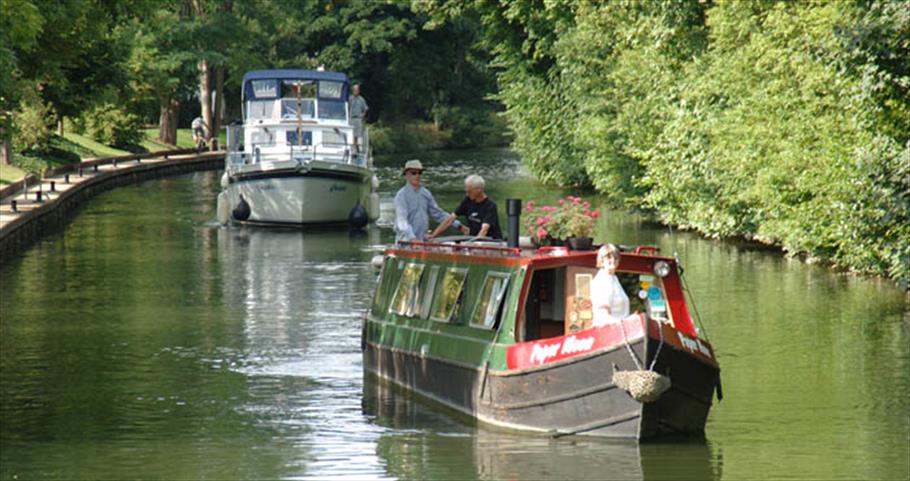You are here: About the River > River Thames Locks > Buscot Lock
Buscot Lock on the River Thames
Buscot Lock is the smallest of the 45 locks on the Thames.  The manual beam-equipped pound lock was built in 1790, today it looks just as it did more than 200 years ago. Before the lock was built, there was a flash weir, where boats would 'run the rapid' downstream. When the lock was built the weir was owned by E Loveden of Buscot Park, who was a very strong champion of Thames navigation. The lock keeper's cottage was built in 1791 and features a fish house. The old weir was renewed by Lord Faringdon of Buscot Park in 1909, and was replaced by the new cut and weir in 1979. It is a lovely weir pool which is now a National Trust picnic area and otters, kites and kingfishers can be spotted.
The manual beam-equipped pound lock was built in 1790, today it looks just as it did more than 200 years ago. Before the lock was built, there was a flash weir, where boats would 'run the rapid' downstream. When the lock was built the weir was owned by E Loveden of Buscot Park, who was a very strong champion of Thames navigation. The lock keeper's cottage was built in 1791 and features a fish house. The old weir was renewed by Lord Faringdon of Buscot Park in 1909, and was replaced by the new cut and weir in 1979. It is a lovely weir pool which is now a National Trust picnic area and otters, kites and kingfishers can be spotted.
The lock was purchased (included within a large estate) as part of Buscot Park in 1859 by Robert Tertius Campbell with money acquired in the Australian goldfields. He fitted water wheels to irrigate his estate, but sold up within 10 years, the result of overspending and bad luck. Later owners, Thomas Cook the travel agents, gave the site to the National Trust.
The river winds and doubles back on itself sharply on the short stretch upstream. Buscot Park is above the lock.
The Thames Path National Trail (Lechlade to Newbridge) follows the northern bank from Buscot Lock to Bloomers Hole Footbridge, where it crosses the river and continues on to the next lock St. John’s lock. Downstream is Eaton Footbridge and Grafton Lock.
Buscot to St. John’s Walk This  walk is about 2 miles long; however, it gives you the option to extend the walk to 3 miles if you wish. It leads you around Buscot, north to St John’s Lock and into Lechlade.
walk is about 2 miles long; however, it gives you the option to extend the walk to 3 miles if you wish. It leads you around Buscot, north to St John’s Lock and into Lechlade.
Did you know?
Robert Tertius Campbell made his fortune in the Australian gold rush as a gold trader. When he brought Buscot Park he turned the extensive estate over to the production of alcohol, made from sugar-beet and beetroot. Barrels of spirit alcohol were sent down the Thames and across to France to be used in the production of brandy. Sadly, he was never able to recoup his huge capital outlay and the venture failed. At the height of Robert Campbell’s financial troubles he also faced a crisis within his family. His eldest daughter, Sydney born Florence, was involved in one of the Victorian era’s most notorious unsolved murders. She is buried in an unmarked grave in St Mary’s churchyard, Buscot. Find out the full story in Pauline Connolly’s article ‘WALTZING MATILDA DOWN THE THAMES’.
Contact details
Telephone: +44 (0)3708 506 506
Postcode: SN7 8DA
Find out more about Buscot Lock facilities.
Where to stay?
You can’t get closer than Buscot Manor B&B, a beautiful Queen Anne Manor House built in 1692 idyllically positioned on the edge of the historic, tranquil National Trust Village of Buscot. Within walking distance of the River Thames and Buscot Lock, it offers a bespoke Bed and Breakfast service, for those who wish to indulge and experience life in the grandeur and splendour of an English country manor house.
.png)






